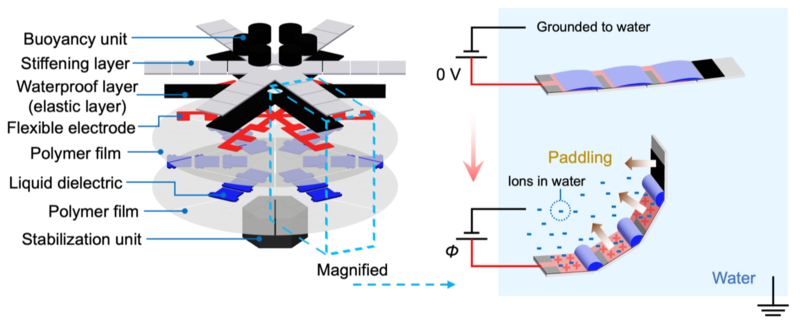Roboticists from the Max Planck Institute for Intelligent Systems have developed an underwater robot,
For their development, engineers usedhydraulic actuators through which electricity passes. They serve as artificial muscles that power the robot. These muscles are surrounded by air cushions and soft and hard components that stabilize the robot and make it waterproof. The power supply periodically supplies electricity through thin wires, causing the muscles to contract and expand. This allows the robot to float gracefully and create swirls.
 Medusa robot device. Image: Max Planck Institute for Intelligent Systems
Medusa robot device. Image: Max Planck Institute for Intelligent Systems
When a jellyfish swims up, it can captureobjects, such as food, by creating water currents around their body, the scientists explain. The robot is designed in the same way, controlling water flows, it can lift garbage from the bottom and transport it to the surface, where it will be removed and sent for processing.
Jellyfish robots are capable of moving and capturingobjects without physical contact, acting either singly or in groups. The researchers note that it can move at speeds up to 6.1 cm/s and operates at a low power of about 100 mW. This means that depressurization of the hull will not endanger people or aquatic life.
Robot jellyfish. Video: Max Planck Institute for Intelligent Systems
Existing underwater robots are mostlybulky with solids, the engineers note. They cannot examine and sample complex and unstructured environments and are noisy due to electric motors or hydraulic pumps. Alternative technology will allow to carry out work with a minimum impact on the environment.
Read more:
There was a photo inside the second deepest underwater sinkhole in the world
See what happened to Mercury when it got as close as possible to the Sun
Scientists are ready to recognize the new tree as the oldest in the world